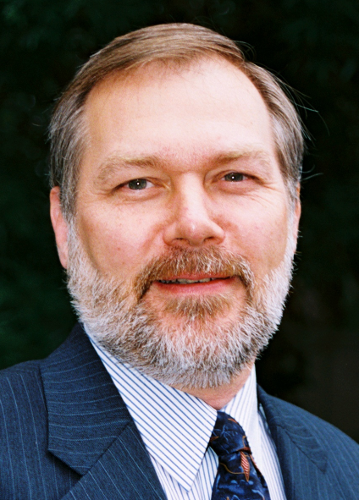Homopropaganda – 10 zasad prowadzenia debaty (Scott Lively)/en
“Gay” Advocate: “Can’t you see that denying gays the right to marry is discrimination. Why shouldn’t they have the same basic rights as heterosexuals?”
You: “I’m a little confused by your argument. Are you saying that you think homosexuality is equivalent to heterosexuality?”
“Gay” Advocate: “Of course they are equivalent. One person is no better than another just because of whom they happen to love.”
You: “I still don’t get it. How do you define homosexuality and heterosexuality? It’s more than a question of romantic feelings isn’t it?”
“Gay” Advocate: “Homosexuality is just your sexual orientation. It’s the way you’re born. Some people are straight. Some are gay. You don’t think gay people should be discriminated against just because they have a different orientation, do you?”
You: “I’d like to answer that question after we talk about what sexual orientation is, but I’m still not clear on what you mean by homosexuality. How do you know that it’s just the way someone is born?
“Gay” Advocate. “Everybody knows that. There are lots of studies. Besides, who would choose to be gay when there is so much hatred and homophobia against them?”
You: “Lots of people make choices that other people hate. That doesn’t prove anything. And all the studies that I have seen have been inconclusive. Can you cite me any study that absolutely proves that gays are born that way?”
“Gay” Advocate: “They’re out there. But gay people don’t have to prove themselves to deserve basic rights. You don’t have to prove your heterosexuality to get your rights do you?”
You: “Now we’re back where we started on this question of whether homosexuality is equivalent to heterosexuality. You still haven’t defined what homosexuality is or what heterosexuality is. Isn’t it a question of behavior?”
“Gay” Advocate: “No, its not about behavior, its about orientation. I already said that. You can be gay and celibate. Being gay is when the person you fall in love with is the same sex as you. Being straight is when you fall in love with someone of the opposite sex. That’s it.”
You: “So where does sex come in. If orientation has nothing to do with sexual behavior, what stops pedophiles from claiming equality with gays and straights? If they never get physical, what does it matter if they fall in love with a child?”
“Gay” Advocate: “Yeah, but pedophilia is illegal.”
You: “Right. The behavior is illegal, but not the thoughts and feelings. That’s why its important to be very clear on the definition of homosexuality and heterosexuality before we decide if they’re equal. If we’re only talking about thoughts and feelings, then perhaps they are equal, but then so are all the other orientations you can think of. If we compare them by the types of behavior they involve, that’s a different story.
Pedophile behavior is illegal because it harms children. Homosexual behavior is still illegal in many countries because it spreads disease and dysfunction.”
“Gay” Advocate: “Well heterosexuals engage in the same risky behaviors as homosexuals.”
You: “So would you agree that disapproval of all harmful sexual conduct is reasonable?”
“Gay” Advocate: “No, I don’t think its anyone’s business what two people do in the privacy of their own bedroom.”
You: “Allow me to summarize what you’re saying. Homosexuals and heterosexuals are only different as to the choice of their partner, one is same-sex, the other opposite sex, but that they are equal in that both engage in the same types of sexual conduct. You also believe that society has no right to regulate sexual conduct even if it threatens the public health, but you would make an exception for pedophiles. Is that about right?”
“Gay” Advocate: “I’m not going to let you trap me into some homophobic box. Your problem is that you’re a bigot.”
You: “Your problem is that you don’t understand that homosexuality is very different than heterosexuality. Heterosexuality describes the way all human beings are designed to function as compatible opposite-sex partners. Homosexuality could only be equivalent if it was rooted in a comparable physiological design. Instead, even when engaging in homosexual acts, a person remains inherently and immutably heterosexual by nature. Sexual orientation is just a theoretical model that lets you pretend that sexuality is a subjective state-of-mind and not a form of voluntary physical conduct.
“That’s why marriage is closed to homosexuals. It is an institution designed to protect and strengthen the natural family, which is itself rooted in the procreative heterosexual design we all share.”
Analysis. The preceding hypothetical conversation is actually a composite of many real discussions between myself and various advocates of the “gay” position. It accurately and honestly portrays the typical comments and attitudes of “gay” defenders. What may be gleaned from this exchange is that one can never truly come to a common understanding with a “gay” sophist, since he or she cares only about winning and not about the truth. Yet there are many people who merely parrot “gay” rhetoric and who are really victims of sophistry, not sophists themselves. These people are persuadable.
The only value in arguing with a true sophist is to hone your debate skills. Usually, however, you will have an audience. In that case, take the opportunity to educate your audience and don’t be discouraged that your opponent refuses to see reason.
When all is said and done, the only real solution to the problems created by “gay” sophistry is to restore a truthful standard in every institution where the sophists now hold sway. That means that we who have learned how to defeat “gay” sophistry must actively compete for influence in those institutions and to persuade others who share our love for the truth to do the same.
This is an excerpt of the book Redeeming the Rainbow written by Scott Lively.
Copies of this book may be downloaded from www.defendthefamily.com
Thanks to Scott Lively for granting permission to publish this excerpt here.
